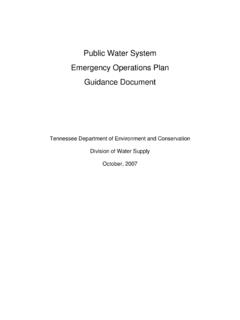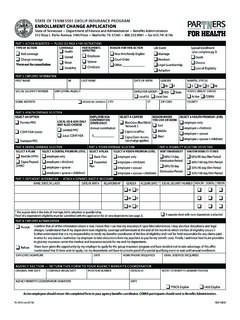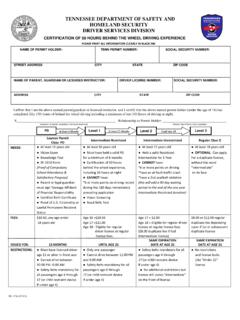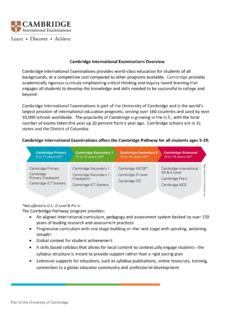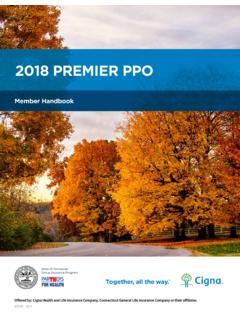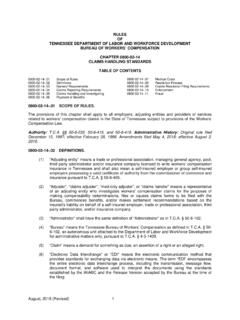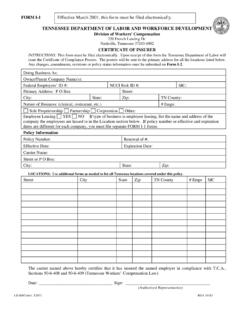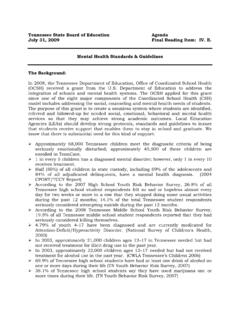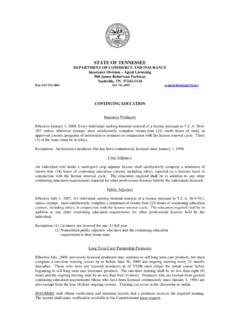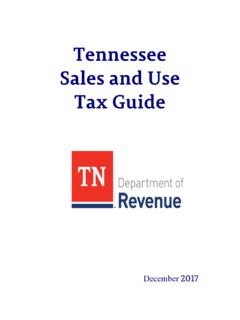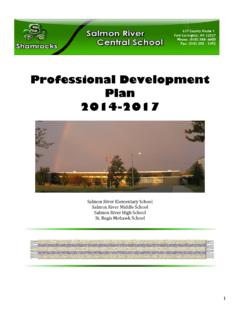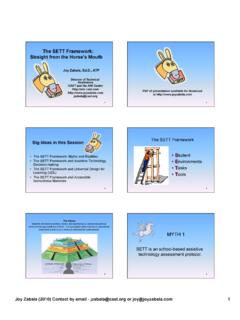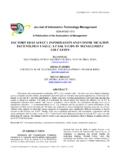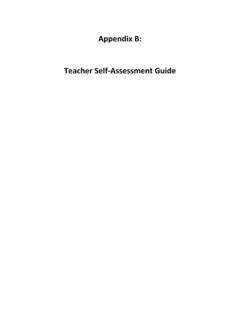Transcription of Special Education Framework Updated August 2018 - TN.gov
1 Tennessee Department of Education | Updated August 2018 1 Table of Contents Section I: General Component 1: Overview of Special Component : The IEP Component : IEP Team Component : Student and Parental Involvement ..11 Component : Parent Procedural Component 2: Evaluations and Eligibility ..17 Component : Child Find Responsibilities ..17 Component : Prevention and Early Intervention ..19 Component : Component : Evaluation ..21 Component : Eligibility ..23 Component : Timeline Extension Component : Re-Evaluations ..24 Component : Transfer Component : Unilaterally Placed Component : Assessment Section II: The IEP Writing Component 3: Component : Student Strengths.
2 32 Component : Parent Component Adverse Impact on Educational Performance ..32 Component : Medical Information and Component : Consideration of Special Factors ..33 Component 4: Present Levels of Educational Performance ..36 Component : Development of Present Levels of Educational Performance ..37 Component 5: Measurable Annual Goals ..38 2 Component : Development of Measurable Annual Goals ..38 Component : Short-term Component 6: Accommodations and Modifications ..41 Component : Accommodations for Core Instruction, Intervention, and Assessment ..41 Component : Selecting Accommodations Based on Individual Student Component : Unique Component : Modifications to Core Instruction, Intervention, and Assessment.
3 46 Component : Determining Participation in State Assessments ..46 Component : Assistive Technology Devices and Services ..47 Component : Accommodations for Career & Technical Education (CTE) Safety Component 7: Special Education Service Component Least Restrictive Environment ..49 Component : Access to Career and Technical Education (CTE) ..53 Component : Direct Services ..53 Component : Related Services ..54 Component : Consultation ..54 Component : Collaboration with General Component : Extended School Component : Component 8: High-Quality Transition Component : Guiding Principles ..58 Component : Student Involvement and Component : Age-Appropriate Transition Component : Measurable Postsecondary Component : Course of Study.
4 67 Component : Transition Services ..68 Section III: Implementing the IEP ..71 3 Component 9: Access to High-Quality Core Instruction ..71 Component : Universal Design for Learning ..72 Component : Differentiated Component : Implementing Accommodations and/or Component 10: Special Education Interventions and Service Delivery ..77 Component : Component : Scheduling ..80 Component : Service Delivery ..83 Component : Documentation of Component 11: Progress Monitoring and Data to Support Student Progress ..89 Component : Data-Based Decision Making ..89 Component : Types of Progress Monitoring ..91 Component : IEP Goal Measurement Component : IEP Effectiveness.
5 95 Component 12: Supporting Student Behavior ..95 Component : Tiered Behavior Supports ..96 Component : Functional Behavior Assessment ..97 Component : Behavior Intervention Plan .. 100 Component : Manifestation Determination .. 101 Component : Isolation, Seclusion, and Restraint .. 104 Glossary .. 107 120 Appendix A: Prior Written Notice 124 Appendix B: Timeline Extension .. 126 Appendix C: Transfer Students .. 127 Appendix D: Unique Adaptive Accommodations 130 Appendix E: Special Education 131 4 Dear educators, In 2015, the Tennessee Department of Education outlined its vision, goals, priorities, and strategies in the Tennessee Succeeds strategic plan (here).
6 This plan is anchored in the foundational belief that all students can achieve and all students deserve access to postsecondary and career opportunities after graduation. Within the Special populations division, it is our mission to support districts and schools in graduating students who are equipped with the knowledge and skills necessary to successfully embark on their chosen path in life. The beliefs at the forefront of our work are as follows: Special Education is not a place; it is the most intensive intervention along the continuum of service, defined by individual need, services, and placement. Strong leadership at every level is the foundation of a collaborative and inclusive environment that supports all students. All students are general Education students first, and every student can learn and demonstrate growth.
7 Thus, all students must have access to high-quality, evidence-based instruction that maximizes his/her potential in the Least Restrictive Environment (LRE). Educators are the key to student success and should be supported instructionally and professionally. All students can achieve postsecondary success. A significant part of ensuring a student s needs are met is the Individualized Education Plan (IEP), a document that identifies a student s disability, outlines clear goals and objectives, and explains how the student will be supported. The IEP guides how a school configures its Special Education resources in order to provide opportunities for a student with disabilities to achieve desired outcomes. The purpose of the Special Education Framework is to support educators in writing instructionally appropriate IEPs.
8 Several years ago, the department developed the first Special Education Framework and has continuously garnered feedback from educators on how to improve the Framework in order to be most useful to teachers as they support students with disabilities. The Framework is now organized into three sections: (I) general information about Special Education ; (II) writing IEPs. Other significant improvements include a component on the development of writing short-term objectives, additional clarification around service delivery, and links to resources for the IEP team; and (III) implementing the IEP. Looking ahead, the next revision of the Framework will include a third section on the implementation of IEPs with a clear delineation between best practices and legal requirements.
9 We thank you for your dedication to serving students with disabilities in Tennessee. We look forward to providing our continued work together to improve outcomes for all students. Theresa Nicholls Assistant Commissioner, Special Populations & Student Support 5 Tip! Terms highlighted in yellow are defined in the glossary. Section I: General Information Component 1: Overview of Special Education Introduction Research and practice have demonstrated that several factors are necessary to significantly improve outcomes for students with disabilities. In order for all students to receive meaningful instruction and services, schools must provide: high expectations for students with disabilities; appropriate differentiation and scaffolding to support students with disabilities in participation and progress towards the general Education curriculum; meaningful opportunities for parent(s)/legal guardian(s) to participate in the development, review, and revision of the individualized Education program (IEP) and participate in the Education of their children at school and home; appropriate supplementary supports and services in the general Education classroom whenever appropriate; effective systems of behavior support at the school, class, and individual level.
10 Appropriate skills and knowledge for those who work with students with disabilities to help such students meet academic and functional goals; preparation for students to transition to adult living and learning to lead productive, independent adult lives to the maximum extent practicable; and high-quality resources and instructional supports focused on teaching and learning. Additionally, to foster a respectful and inclusive environment, teachers and leaders should recognize Special Education as part of the continuum of services and supports, rather than as a location where struggling students are sent. Special Education should be considered the most intensive intervention in relation to the tiered interventions outlined in the RTI2 Framework .
